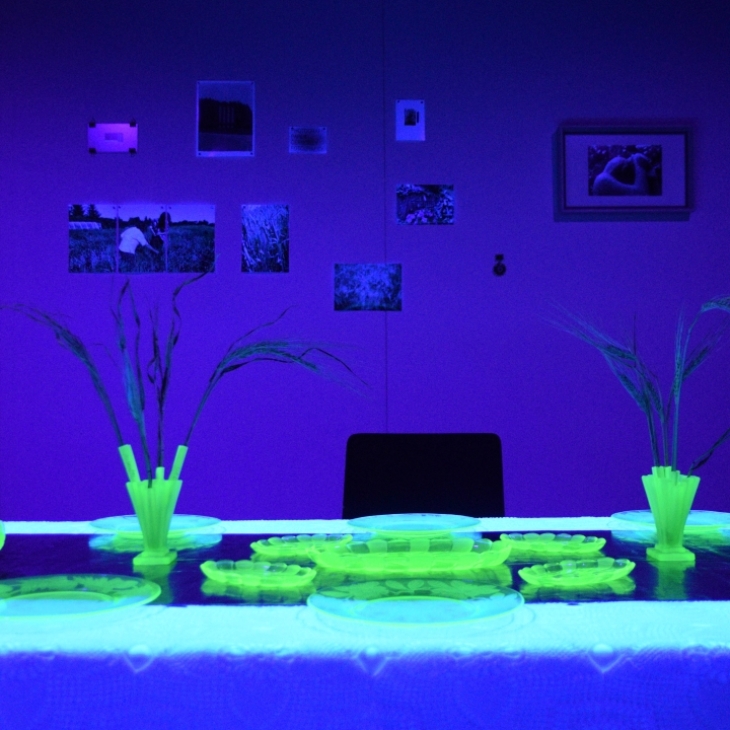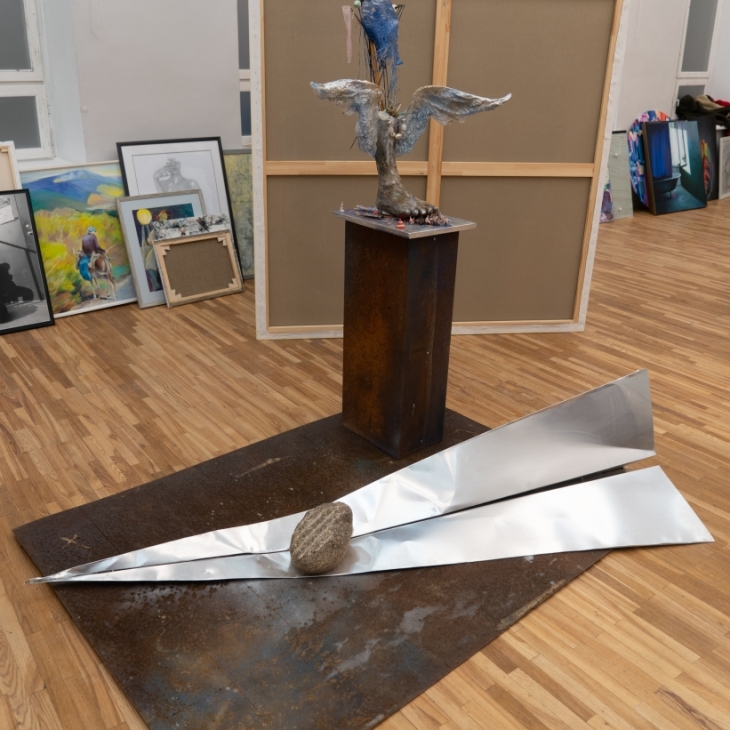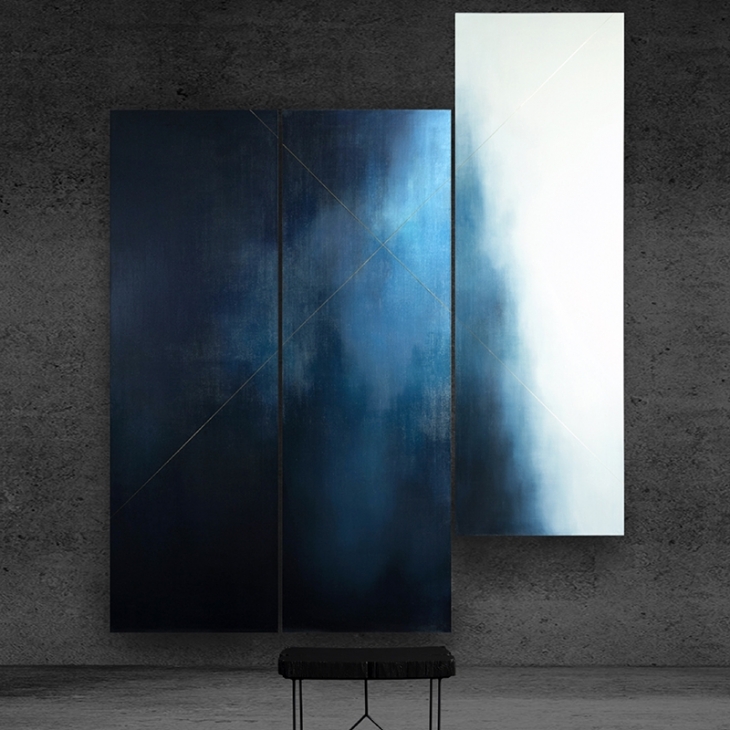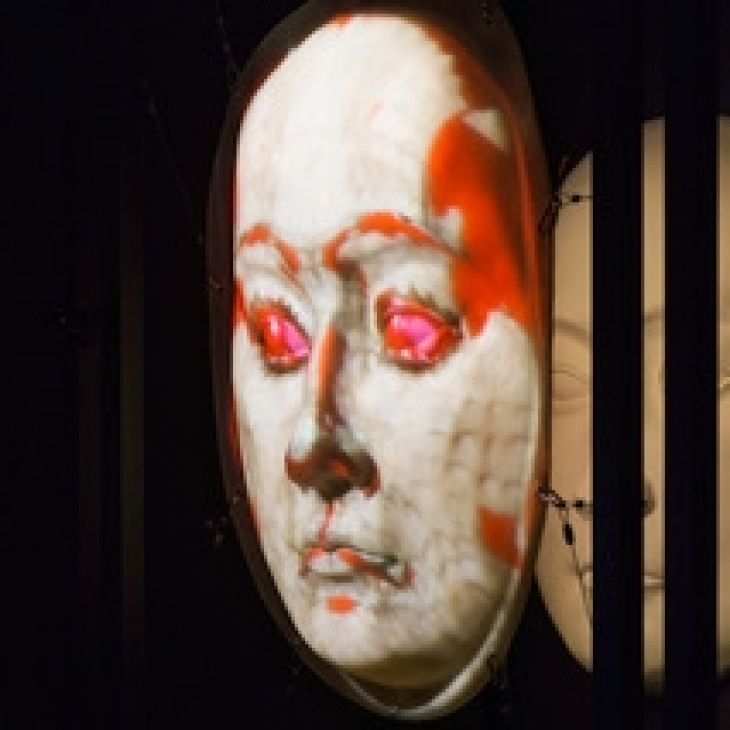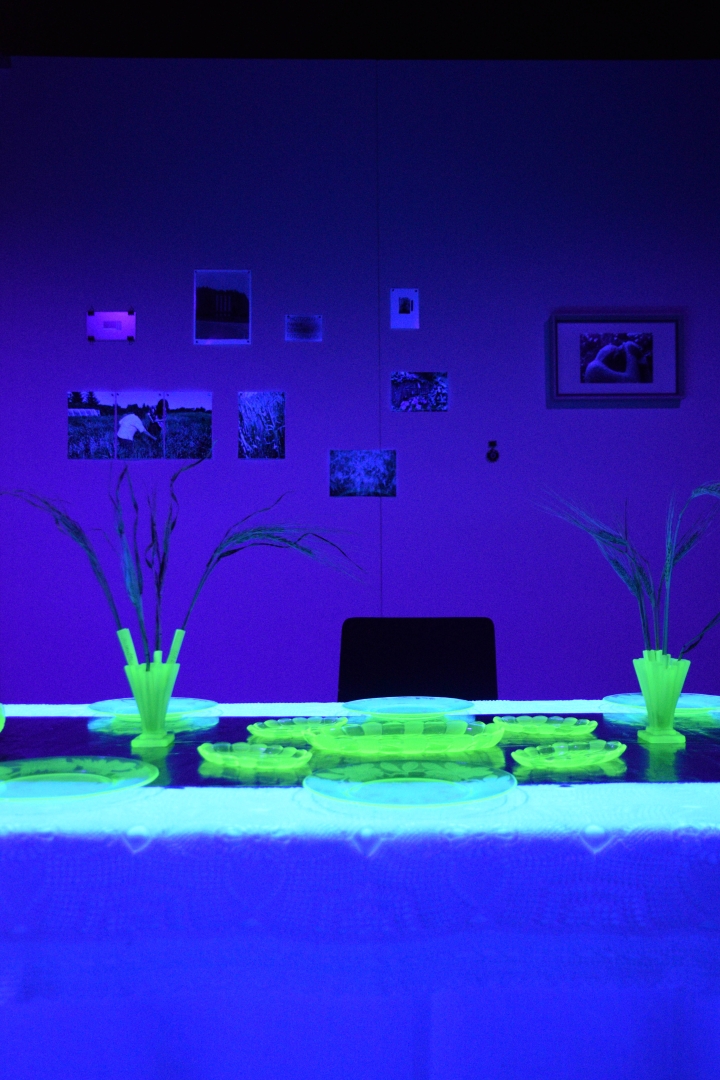Atomic Banquet, 2023
Uranium glass, lead, found objects, photographs, aluminum, gypsum
How would a person act, if they knew they were eating from radioactive dishes?
That is what I attempted to find out with my project. At the start of the 20th century dishes containing uranium were quite common. However, with support for nuclear decreasing and with deeper knowledge of radiation’s harm, the production of these kinds of dishes ceased. Nowadays one can find uranium dishes in second hand shops or tucked away somewhere at home. This is how I came to acquire my collection. I did not have to look far, the first few uranium glass items I found in a cupboard and in my grandmother’s jewelry box. The rest I collected over a span of three years with the intent to collect enough to host a modest dinner.
This dinner is meant as a performance and an experiment to see how people perceive radiation, how they act around something radioactive, to reveal their fears, confidence or even indifference to this subject. The uranium glass dishes not only serve as a source of radiation but also as something familiar. Everyone could have this kind of dish at home. It is representative of the fact that radiation and the nuclear energy are not some far off concept tucked away from sight but something we can encounter or experience everyday. For dinner my guests had a choice of entrees made of ingredients also relating to radiation and/or its uses. For example a drink with grapefruit that was mutated using radiation or a selection of Brazil nuts which sometimes have higher than normal radiation levels. For dessert some jello made with Hiroshima ginkgo tea and some lemon drops that glow in UV. I picked this menu to reinforce the idea of the commonness (even banality in a sense) of radiation.
Of course the dinning table was not bare. It had a two vases with bouquets of barley. Another reminder of the ubiquity of radiation since the barley was also produced by a scientist from the Vilnius university botanical garden using radiation. The table was also decorated by a lead tablecloth with an imprinted pattern of Hiroshima ginkgo leaves. This object both toxic but protecting, metal but extremely malleable, warm to the touch. It is also the stable form of uranium after it finishes its decay chain.
The tablecloth was part of my experimentation with analog photography since it played a roll in the discovery of radiation. For this reason it became my main media in documenting the radioactive sites around Lithuania. The prints of these pictures lined the walls of the installation accompanied with some items I have found in my journeys into the subject of nuclear energy. On the day of the dinner (my bachelor defense) of the seven guests (the review committee) that I invited to dine with me none initially sat down with me. Only after some time three joined me at the table. It also became a place to discuss the guests’ thoughts and feelings about the subject of nuclear energy and radiation. These discussion continued over the span of the two week exhibition with guests accompanied with some lemon drops served in a uranium glass bowl. This whole experience revealed a great plurality of opinions and emotions associated with this subject.

